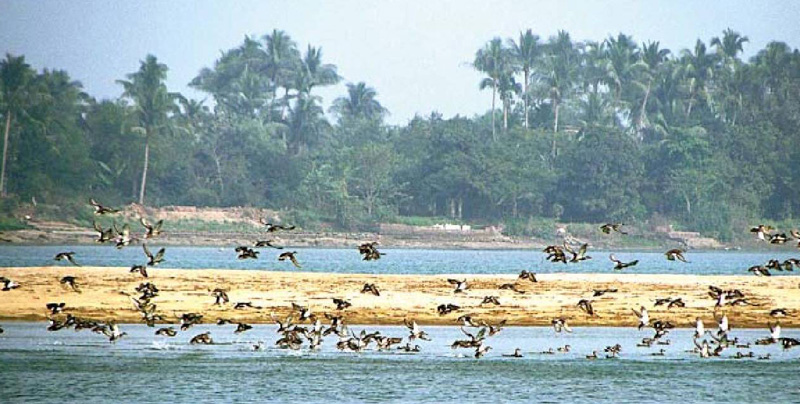Cultural capital & birthplace of Subash Chandra Bose
 An ancient city at the alluring convergence of Mahanadi and Kathjuri Rivers, Cuttack in the Indian state of Orissa boasts of a magnificent history. The second largest city in Orissa is popularly called as the cultural capital of the state and is regarded as the twin city of Bhubaneswar. The city covers an area of around 3932 square kilometers and is the administrative headquarters of the territory.
An ancient city at the alluring convergence of Mahanadi and Kathjuri Rivers, Cuttack in the Indian state of Orissa boasts of a magnificent history. The second largest city in Orissa is popularly called as the cultural capital of the state and is regarded as the twin city of Bhubaneswar. The city covers an area of around 3932 square kilometers and is the administrative headquarters of the territory.
This renowned city has been bestowed with sobriquets like millennium city, commercial capital and so on. Being a hectic centre of commercial activities, the city serves as the market junction of varied artifacts from the length and breadth of the state.
Early known history of Cuttack revolves round the mighty kings of Keshari dynasty. Nrupa Keshari of this dynasty established the city as a military cantonment which gave Cuttack its present outlook. After their rule of several years the city had witnessed the rise and fall of so many kingdoms and in 1750, it came under Maratha rule, which transformed the city into a major business centre. Later the British acquired control of Cuttack in the year 1803 under whom the city has gained historical development as the capital of Orissa till the time of Indian Independence.
Cuttack would be remembered forever as the birthplace of the illustrious Indian, Subash Chandra Bose whose motivating speeches and deeds paved a new renaissance in the freedom movement of the Country.
Like all other major cities of the subcontinent, cultural life of Cuttack is marked with colorful festivals and fiestas. Apart from the usual celebrations of Dusshera of a typical Indian city, Cuttack showcases a unique festival of its own by name Baliyatra, which commemorates the ancient trade links of the city with Java, Bali and Sumatra. Among the other alluring festivals, Kite festival in the month of January unfolds something special.
An excellent and outstanding tourism spot with an array of impressive attractions, Cuttack stands as the most outstanding paradigm of antique technological abilities of Orissa. It is definite that tourists can spend a relaxing time in Cuttack and make their trip a most memorable one.
Major Attractions
Barabati Fort: A fort that speaks the glory of centuries old tradition, Barabati Fort boasts of the glorious rule of the mighty empire of Ganga rulers. Originally constructed in the 11th century, this fort has been subjected to further modification and in the 14th century, it has been thoroughly modified into its present form. This medieval fort on the banks of Mahanadi River is really worthy for a visit since it beholds the remnants of a past legacy, which is reflected in its intricately carved gateway, moat and the earthen mound of the nine-storied palace.
Stone Revetment: One among the marvels of ancient engineering skill, the stone revetment on the banks of Kathjuri River, allures the onlookers with its perfection. This centuries old stone formation is a popular destination in Cuttack, which bears true testimony to the technical skill and logical thinking of the Oriyans of 11th century.
Bhitarkanika Wildlife Sanctuary: A sprawling expansion of 650 sq km, which houses rich marine vegetation, dynamic and salt tolerant varieties of trees, accumulated land, rivers, estuaries, mud flats, creeks and backwater Bhitarkanika Wildlife Sanctuary acquires a unique position. Regarded as one of its kind in the entire Asia, this sanctuary is famous as a natural abode of the estuarine crocodiles.
Cuttack Chandi Temple: A holy shrine believed to be the abode of the guardian deity of the city of Cuttack, Temple of Cuttack Chandi boasts of a fabulous tale. The place where the temple is now situated was a fallow land earlier and the goddess appeared there to a man called Hansa Panda and asked him to bring the goddess out from the soil. While digging, around forty bullock cart full red Sindoor and the Devi emerged from the soil. The people in Cuttack believe that the deity in this temple guards the city from all evil.
Quadam-i-Rasool: A shrine with unparallel credentials Quadam-i-Rasool, located near the old quarters in the city, stands testimony to the communal harmony of the ancient generation. Built by a Hindu ruler for the benefit of Muslims, this 18th century shrine is a revered centre for both Hindus and Muslims.
Singanatha Temple: One among the imposing structures in the city, Singanatha Temple is the oldest temple in Cuttack. This holy shrine is located in a tranquil ambiance of Mahanadi River more particularly on a rocky island. An epitome of sacredness and tranquility, this devout centre is a popular pilgrim centre in the city.
Dhabaleshwar: A magnificent shrine dedicated to Lord Shiva, Dhabaleswar Temple is one among the most sought after pilgrim centers in Orissa. This white Shiva temple in the small island Dhabaleswar in Mahanadi lures the devotees with its imposing scenery. Its scenic position atop a small hill gives it an ethereal appeal.
Best time to visit here is September to March
How to reach:
By Train: The railhead in Cuttack lies on the Chennai-Kolkata rail line. This station is pretty well-connected to the Delhi, Kolkata, Mumbai, Chennai, Bangalore, and from many other cities and states.
By Air: The nearest airport is the Biju Patnaik Airport of Bhubaneswar, which is about 25 km away from the heart of the city. This airport is well connected to the major cities of India.
By Bus: State owned public transport buses operate from Bhubaneswar (25 km) and Puri (90 km) to Cuttack.






